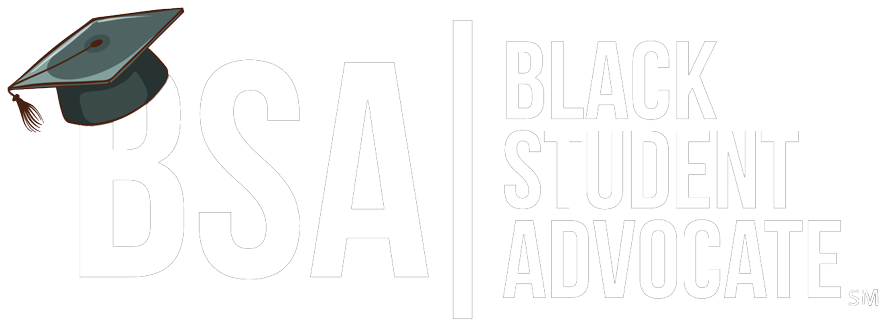Education is often described as the great equalizer—a space where every student, regardless of their background, should have the opportunity to learn, grow, and achieve their fullest potential. However, the harsh reality is that bias and discrimination within schools remain a persistent problem. Teachers, whether intentionally or unintentionally, sometimes perpetuate inequalities by treating students differently based on race, gender, socio-economic status, learning abilities, or other personal characteristics.
When we talk about teachers discriminating against students, we are addressing a critical issue that undermines trust, academic performance, and student well-being. Discrimination in classrooms does not just harm an individual student—it perpetuates systemic inequities and weakens the very foundation of education.
At The Black Student Advocate Network, our mission is to spotlight these injustices and push for meaningful change. In this blog, we’ll explore the types of teacher discrimination, the lasting effects it has on students, and the practical solutions schools and communities can implement to create more equitable classrooms.
1. Understanding Teacher Discrimination in Schools
Discrimination in education occurs when students are treated unfairly or unequally based on characteristics that should have no bearing on their academic journey. Teachers, as authority figures, play a powerful role in shaping student experiences. When their biases manifest in words, actions, or expectations, they create environments where some students feel valued while others feel invisible or judged.
Common root causes of teacher discrimination include:
- Implicit bias – unconscious stereotypes influencing behavior.
- Cultural misunderstandings – lack of awareness about diverse student backgrounds.
- Systemic inequities – policies that perpetuate racial or economic disparities.
- Personal prejudice – overt favoritism or hostility rooted in stereotypes.
Recognizing that discrimination exists is the first step toward dismantling it. Without awareness, schools risk normalizing patterns of inequity that harm students academically and emotionally.
2. Types of Teacher Discrimination Against Students
Discrimination is not always loud or obvious. Sometimes it is subtle—hidden in microaggressions, expectations, or patterns of discipline. Below are the most common forms of teachers discriminating against students:
a) Racial and Ethnic Discrimination
Students of color, particularly Black students, often experience harsher discipline, lower academic expectations, and stereotyping. Studies show that Black students are disproportionately suspended or referred for disciplinary action compared to their peers for the same behaviors.
b) Gender Discrimination
Girls may be discouraged from pursuing STEM fields, while boys are often pressured to conform to traditional masculine roles. Gender-based stereotypes affect how teachers respond to behavior, interests, and academic performance.
c) Socio-Economic Discrimination
Students from low-income families may be unfairly judged as less capable or motivated. Teachers might assume these students lack support or discipline, overlooking their resilience and potential.
d) Discrimination Against Students with Disabilities
Students with learning differences or disabilities are often underestimated. Instead of receiving inclusive support, they may face lower expectations or even exclusion from mainstream learning opportunities.
e) Language and Cultural Discrimination
English Language Learners (ELL) and immigrant students often face bias. Teachers may interpret language barriers as lack of intelligence, rather than recognizing the challenge of navigating multiple languages.
f) Favoritism and Nepotism
Sometimes discrimination stems from favoritism—teachers showing preference for students with similar backgrounds, higher social standing, or family connections. This undermines fairness and equity in the classroom.
Each of these types perpetuates inequities and sends harmful messages to students about their worth and potential.
3. Effects of Teacher Discrimination on Students
The consequences of teachers discriminating against students extend far beyond the classroom. These effects can be both immediate and long-lasting:
a) Lower Academic Achievement
When students are not encouraged, challenged, or supported, they are less likely to excel academically. Teacher bias lowers student motivation and reinforces underperformance.
b) Erosion of Self-Esteem
Discrimination chips away at a student’s confidence. Being unfairly judged or marginalized leads many to internalize feelings of inadequacy, which may persist into adulthood.
c) Mental Health Struggles
Students facing discrimination are at higher risk of anxiety, depression, and stress. The constant fear of being singled out or punished unfairly creates a toxic learning environment.
d) Disproportionate Discipline
Harsh and biased disciplinary measures push many students—especially Black students—into the “school-to-prison pipeline.” Instead of being guided, they are punished into disengagement.
e) Long-Term Social and Economic Impact
The effects of classroom discrimination don’t end with graduation. Students who face systemic bias may carry limited career opportunities, financial hardships, and distrust of authority into adulthood.
f) Erosion of Trust in Education
Perhaps the most damaging effect is the erosion of trust. Students who feel discriminated against are less likely to believe that education is a path toward success, weakening faith in schools as institutions of equity.
4. How to Identify Teacher Discrimination
Schools and communities must be able to spot the warning signs of bias to intervene effectively. Indicators include:
- Patterns of Disciplinary Action: Certain groups of students being punished more frequently or harshly.
- Unequal Academic Expectations: Some students consistently encouraged while others are overlooked.
- Teacher-Student Interactions: Tone of voice, body language, or attention differing by student identity.
- Classroom Participation: Students from marginalized groups being called on less often.
- Feedback and Grading Discrepancies: Favoritism reflected in grades or comments.
Parents, administrators, and student advocates must analyze these patterns critically to determine whether they stem from bias or systemic inequities.
5. Solutions to Prevent Teacher Discrimination
Addressing teacher discrimination requires a comprehensive approach that includes education, policy reform, and community involvement. Practical solutions include:
a) Bias Awareness Training
Teachers must undergo continuous professional development to recognize and challenge their biases. Awareness training helps educators confront unconscious prejudice before it harms students.
b) Culturally Responsive Teaching
Classrooms should reflect diverse perspectives, histories, and contributions. Teaching in ways that honor cultural identities fosters inclusion and belonging.
c) Fair and Transparent Discipline Policies
Schools must review and reform disciplinary systems to eliminate disproportionate punishments. Restorative justice approaches can replace punitive models.
d) Student Advocacy Programs
Organizations like The Black Student Advocate Network empower students and families to speak up against bias, ensuring schools are held accountable for fair practices.
e) Equitable Resource Allocation
Ensuring all students—especially those from marginalized backgrounds—have access to advanced classes, extracurriculars, and learning support is crucial for fairness.
f) Parental and Community Involvement
Parents and community leaders must be active in school boards, committees, and classrooms to monitor progress and advocate for student rights.
6. Building a Future of Equity in Education
Eliminating discrimination requires more than short-term fixes—it demands systemic transformation. Schools must adopt long-term strategies, including:
- Recruiting Diverse Teachers: Representation matters. Students benefit when they see teachers who reflect their identities.
- Inclusive Curriculum: Textbooks, discussions, and classroom activities must reflect diverse voices and challenge stereotypes.
- Policy Reform at District and State Levels: Laws and regulations should mandate equity training, accountability measures, and transparent data collection.
- Student Empowerment: Encouraging students to share their experiences, advocate for their rights, and support peers builds resilience and collective power.
Creating equity in education requires both acknowledgment of the problem and actionable commitment to change.
Conclusion
The classroom should be a safe space where every student is valued, encouraged, and inspired. Yet, teachers discriminating against students continues to be a pressing issue that undermines trust, learning, and opportunity. From racial and socio-economic bias to unfair disciplinary actions, the impacts are profound and long-lasting.
But solutions exist. Through awareness training, inclusive teaching practices, policy reform, and community advocacy, schools can begin dismantling the systemic inequities that hold students back.
At The Black Student Advocate Network, we believe every student deserves an education free from bias and discrimination. By addressing this issue head-on, we can create classrooms that nurture potential, celebrate diversity, and truly prepare students for a just and equitable future.







Share This Page